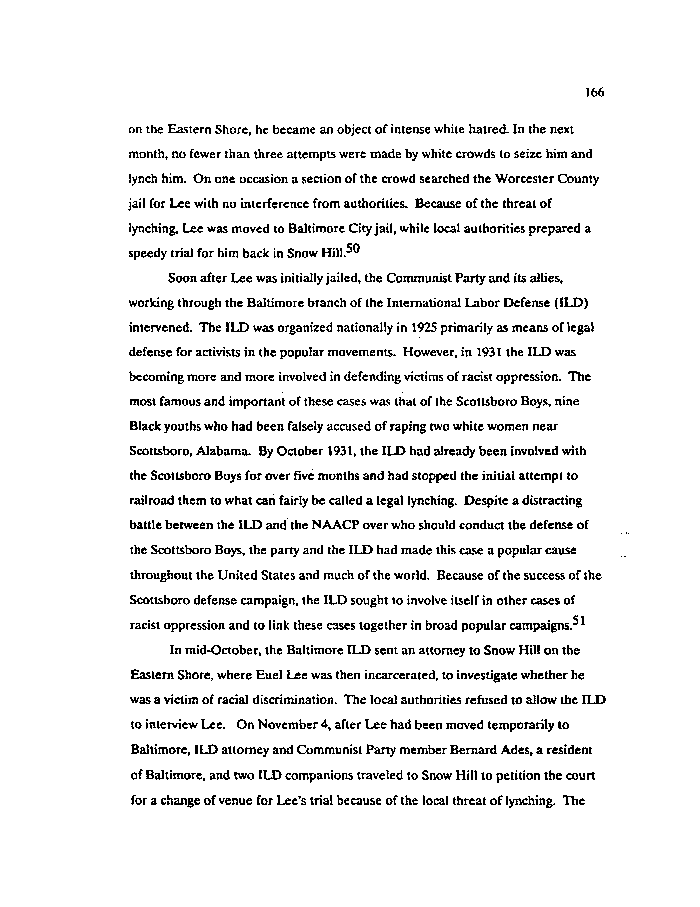|
166
on the Eastern Shore, he became an object of intense white hatred. In the next
month, no fewer than three attempts were made by white crowds to seize him and
lynch him. On one occasion a section of the crowd searched the Worcester County
jail for Lee with no interference from authorities. Because of the threat of
lynching, Lee was moved to Baltimore City jail, while local authorities prepared a
speedy trial for him back in Snow Hillr"
Soon after Lee was initially jailed, the Communist Party and its allies,
working through the Baltimore branch of the International Labor Defense (ILD)
intervened. The ILD was organized nationally in 1925 primarily as means of legal
defense for activists in the popular movements. However, in 1931 the ILD was
becoming more and more involved in defending victims of racist oppression. The
most famous and important of these cases was that of the Scottsboro Boys, nine
Black youths who had been falsely accused of raping two white women near
Scottsboro, Alabama. By October 1931, the ILD had already been involved with
the Scottsboro Boys for over five months and had stopped the initial attempt to
railroad them to what can fairly be called a legal lynching. Despite a distracting
battle between the ILD and the NAACP over who should conduct the defense of
the Scottsboro Boys, the party and the ILD had made this case a popular cause
throughout the United States and much of the world. Because of the success of the
Scottsboro defense campaign, the ILD sought to involve itself in other cases of
racist oppression and to link these cases together in broad popular campaigns.
In mid-October, the Baltimore ILD sent an attorney to Snow Hill on the
Eastern Shore, where Euel Lee was then incarcerated, to investigate whether he
was a victim of racial discrimination. The local authorities refused to allow the ILD
to interview Lee. On November 4, after Lee had been moved temporarily to
Baltimore, ILD attorney and Communist Party member Bernard Ades, a resident
of Baltimore, and two ILD companions traveled to Snow Hill to petition the court
for a change of venue for Lee's trial because of the local threat of lynching. The
|

